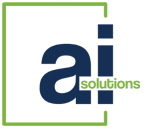Artificial intelligence business rules management systems
Business rules management systems (BRMS) are one of the most popular tools in artificial intelligence and machine learning. BRMS enable companies to easily define, deploy, monitor, and maintain new regulations, procedures, policies, market opportunities, and workflows. One of the main advantages of business rules is that they can be written by business analysts without the need of IT resources. Rules can be stored in a central repository and can be accessed across the enterprise. Rules can be specific to a context, a geographic region, a customer, or a process. Advanced Business Rules Management systems offer role-based management authority, testing, simulation, and reporting to ensure that rules are updated and deployed accurately.
AI Solutions is a decision-making technology. A focus on decisions, not a separate AI initiative, delivers business value and a strong ROI. As companies invest in artificial intelligence (AI) and machine learning, it is clear that a technology-led approach does not work. To get business value from AI, companies should focus AI efforts on improving business.

The most important decisions are made every day. Insurers that adopt a decision-centric approach to analytics and artificial intelligence are improving business outcomes. Setting the stage There has been a level of frustration and insecurity in the past few years about the fate of the insurance industry. At first, vendors and other service providers raised.
In a BRMS, a representation of business rules maps to a software system for execution. A BRMS therefore relates to model-driven engineering, such as the model-driven architecture (MDA) of the Object Management Group (OMG). It is no coincidence that many of the related standards come under the OMG banner.
A BRMS is a critical component for Enterprise Decision Management as it allows for the transparent and agile management of the decision-making logic required in systems developed using this approach.
Advantages
The adoption of business rules adds another tier to systems that automate business processes. Compared to traditional systems, this approach has the following major advantages,
• lowers the cost incurred in the modification of business logic
• shortens development time
• rules are externalized and easily shared among multiple applications
• changes can be made faster and with less risk
Business rules represent a natural step in the application of computer technology aimed at enhancing productivity in the workplace. Automated business processes that have business logic embedded inside often take substantial time to change, and such changes can be prone to errors. And in a world where the life cycle of business models has greatly shortened, it has become increasingly critical to be able to adapt to changes in external environments promptly. These needs are addressed by a business rules approach.
Business rules enhance business agility. And the manageability of business processes also increases as rules become more accessible.
A BRMS includes, at minimum: This needs to be attributed:
• A repository, allowing decision logic to be externalized from core application code
• Tools, allowing both technical developers and business experts to define and manage decision logic
• A runtime environment, allowing applications to invoke decision logic managed within the BRMS and execute it using a business rules engine
The top benefits of a BRMS include:
• Reduced or removed reliance on IT departments for changes in live systems. Although, QA and Rules testing would still be needed in any enterprise system.
• Increased control over implemented decision logic for compliance and better business management
• The ability to express decision logic with increased precision, using a business vocabulary syntax and graphical rule representations (decision tables, trees, scorecards and flows)
• Improved efficiency of processes through increased decision automation.
Some disadvantages of the BRMS include:
• Extensive subject matter expertise required for vendor specific products. In addition to Object Oriented Analysis and Design practices, technical developers must know how to write rules and integrate software with existing systems
• Long development cycle due to rule harvesting, integration with existing systems, security constraints, rule migration and rule edit tracking. These offerings are never part of an out of the box vendor solution.
• Reduced IT department reliance may never be a reality due to continued introduction to new business rule considerations or object model perturbations
• The coupling of a BRMS vendor application to the business application may be too tight to replace with another BRMS vendor application. This can lead to cost to benefits issues.
Most BRMS vendors have evolved from rule engine vendors to provide business-usable software development lifecycle solutions, based on declarative definitions of business rules executed in their own rule engine.
However, some vendors come from a different approach (for example, they map decision trees or graphs to executable code). Rules in the repository are generally mapped to decision services that are naturally fully compliant with the latest SOA, Web Services, or other software architecture trends.
